Dolphin swimming ban under final review
KEAUHOU — Approaching and swimming with Hawaiian spinner dolphins is moving closer to being a thing of the past as federal officials work toward finalizing a rule outlawing the practice that’s created a booming tourism industry in West Hawaii and around the state.
Regulations proposed nearly three years ago by the National Oceanic and Atmospheric Administration that would create a 50-yard barrier around Hawaiian spinner dolphins, or naia, for swimmers, vessels and objects, with a few specific exceptions, are nearing completion, said Ann Garrett, assistant regional administrator for the National Marine Fisheries Service Pacific Islands Regional Office Protected Resources Division.
More than 22,000 comments were received on the rule proposed back in August 2016, she said. Over 2,000 of them were unique and 145 made via oral testimony during a half-dozen meetings held around the state, two of which were held on Hawaii Island.
If all goes smoothly, the final rule and EIS could be published by the end of this year, Garrett told attendees of the Marine Mammal Commission’s three-day annual meeting that kicked off Tuesday. Typically, a final rule goes into effect 30 days after publication in the Federal Register, unless otherwise noted.
“It’s difficult to predict, particularly as we move across administrations,” said Garrett, who noted that certain rules and actions not “regulatorily required” have “slowed down” during the current Trump administration. “But, with luck, by the end of the calendar year, we’ll have a final rule.”
If finalized, being within 50 yards of a Hawaiian spinner dolphin, by any means, including swimming or intercepting by boat the mammal’s path, would be outlawed. The prohibition would cover all persons, vessels and objects, and extend 2 nautical miles outward island coastlines, including waters bounded by Maui, Lanai and Kahoolawe.
There are exceptions to the regulations, including when dolphins approach swimmers or boats, when a 50-yard limit doesn’t allow for safe navigation and when the safety of a person or a vessel is in question, among others.
“We do recognize that they are very social creatures and they may approach vessels themselves. Purposefully, the exception doesn’t provide for anyone to engage or pursue those animals,” said Garrett.
The update on the proposed rule came during the Marine Mammal Commission’s annual meeting being held through Thursday at Sheraton Kona Resort &Spa at Keauhou Bay’s Kaleiopapa Convention Center. The event is open to the public. For more information, visit www.mmc.gov.
The commission is an independent government agency charged by the Marine Mammal Protection Act to further the conservation of marine mammals and their environment. It is the only such U.S. government agency that provides comprehensive oversight of all science, policy, and management actions affecting marine mammals.
Last held in Hawaii in 2009, the annual meeting features guest speakers and panelists addressing several key species, including Hawaiian spinner dolphins, monk seals and humpback whales, with discussion organized around general topics: stock assessments and population trends, threats and mitigation actions, monitoring techniques, management progress, and policy recommendations.
An estimated 630 to 670 Hawaiian spinner dolphins, Stenella longirostris, reside in waters around the Hawaiian islands, said Erin Oleson, lead scientist with the National Marine Fisheries Service Pacific Islands Fisheries Science Center.
The NOAA proposal for spinner dolphins is predicated on studies contending that increased human activity in dolphin-resting habitats disrupts resting behavior and may be contributing to displacement of dolphins. Hawaiian spinner dolphins are nocturnal, hunting at night and coming into shallow, near-shore waters to rest during the day.
Those daylight hours, however, are when dolphin-directed activities take place, and according to NOAA, those activities have grown dramatically in recent years as more and more people seek a dolphin experience.
The spinner dolphin tourism industry topped $100 million in 2013 on just Hawaii Island and Oahu, with about $44 million of that coming from the Big Island alone, University of Hawaii at Manoa’s Maine Mammal Research Program Director Lars Bejder said Tuesday referencing a paper by Carlie Wiener that’s still under review.
An estimated three million visitors coming to the state each year seek out whale- or dolphin-related activities, he added.
Bejder also noted recent work by doctoral student Julian Tyne assessing the impact human exposure is having on cetaceans off the Big Island’s leeward coast.
“The spinner dolphins off the Kona Coast of Hawaii have the highest human exposure rates than anywhere in the world — 83 percent of the time, when they are in their resting bays, they have humans within 100 meters,” he said. The average time between exposure is just 9.6 minutes.
Rick Wilson, a 50-year user of the ocean in the islands, watches the interaction happen every single day. He pushed commissioners and every one in attendance to go down to Kailua Bay around 7:30-8 a.m. to witness 10 to 15 boats following and surrounding the dolphins.
“If we continue to harass the dolphins, keep them from resting, then at some point in time, the population is going to probably start declining,” Wilson said during a question and answer session between topics. “Whether it’s 15 years from now or 50 years from now, do you turn around and say, ‘oh my God, we made a mistake the dolphin populations have crashed and what are we gonna do.’”

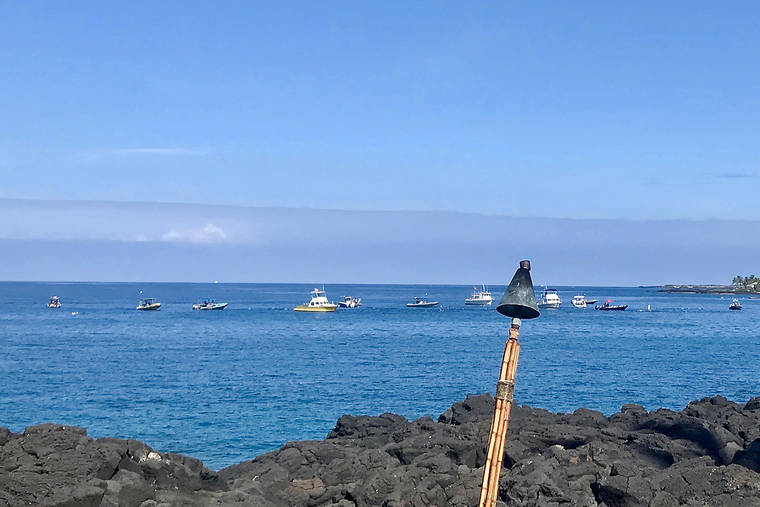
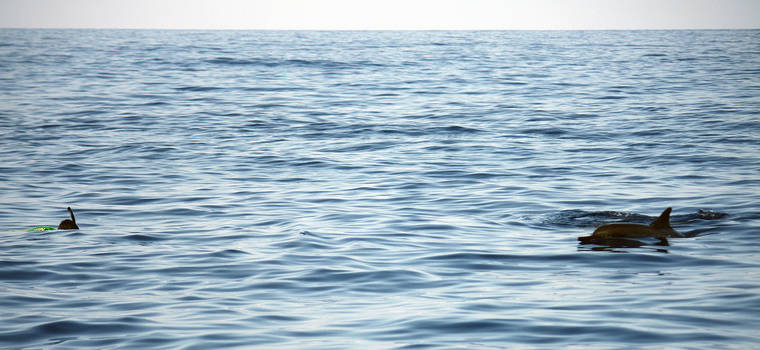
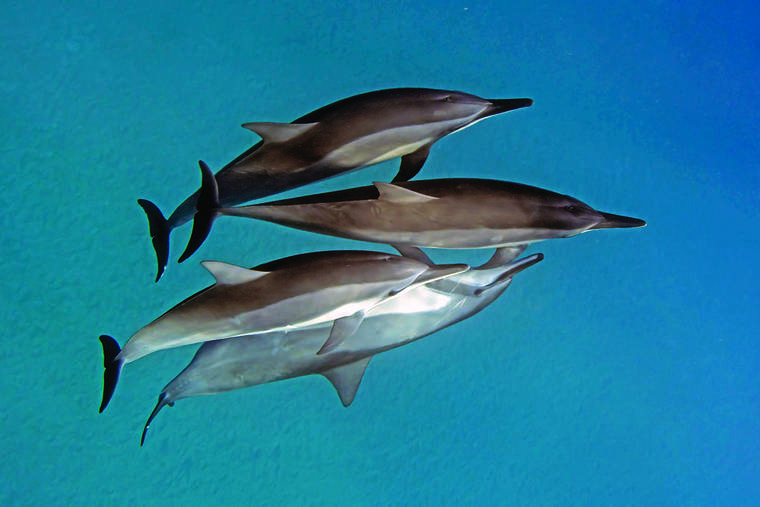
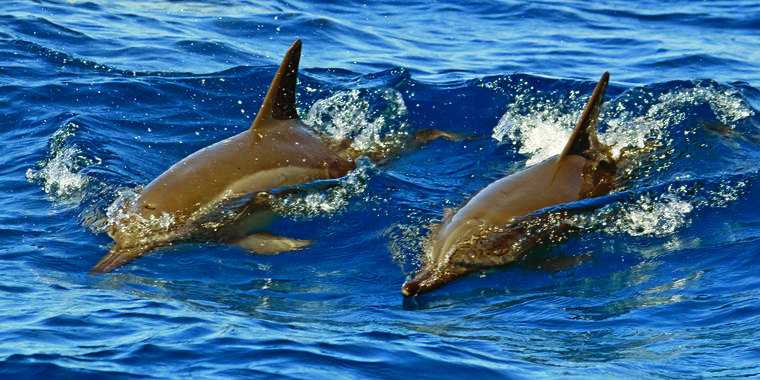

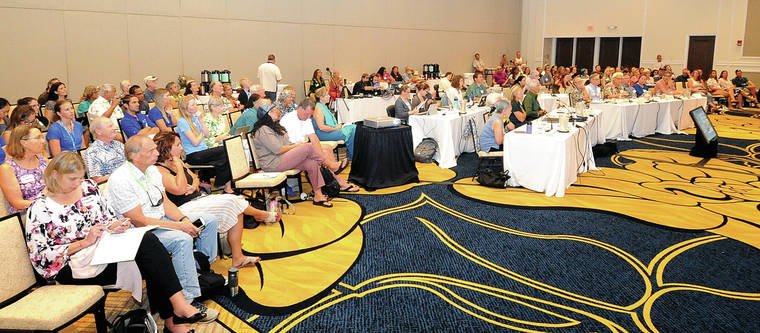


Tyne is a hack with an agenda and a bias. Takes an enormous amount of narcissistic ego mania to believe that a humans can actually swim with dolphins. Mr. Wilson, dolphin populations in West Hawaii are increasing according to Tynes research.